Charger TrustFire TR-006
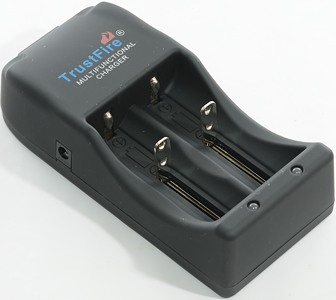
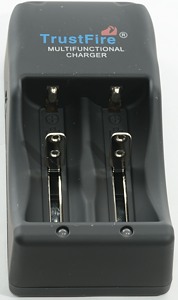
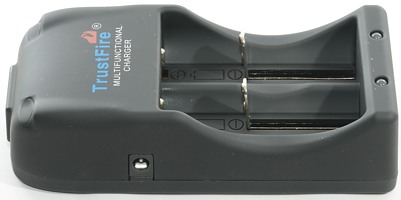
The TrustFire brand covers many different flashlights, batteries and chargers, but usual the quality is a bit low. Here I am testing a two channel LiIon charger that can charge batteries up to 26650 size.
The charger has a slightly rubberized surface.
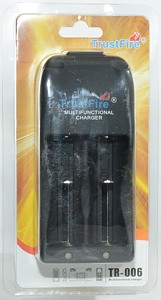
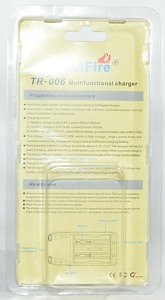
The charger is sold in a clamshell package. The package include charge specifications and a listing of supported battery sizes.
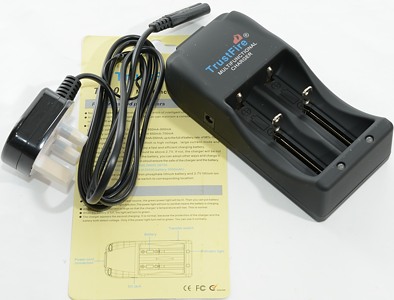
The box contained the charger and a single piece of cardboard with specifications and room for a mains cable. I got a mains cable, but outside the box, probably because the plug on the UK cable is too big to fit in the box (I bought this charger in UK).

The charger has a universal mains input (110-240VAC 50/60Hz).
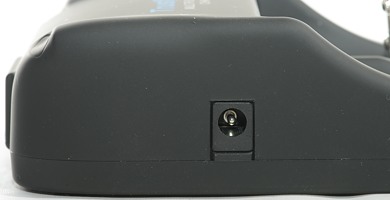
There is also a unmarked DC connector on the charger, it is a 12VDC input.
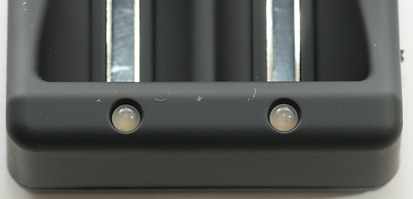
Each channel on the charger has a led, it shows red while charging and green at other times.
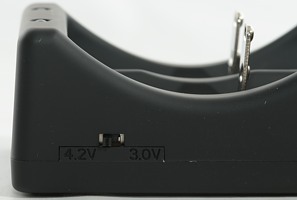
The charger has a switch marked 3.0V/4.2V, this switch select between 3.6V and 4.2V charging voltage for use with 3.2V (often marked 3.0V) and 3.6/3.7V batteries.
This makes the marking a bit misleading.
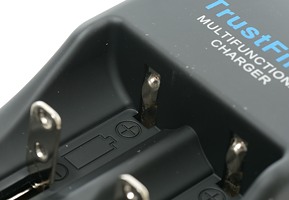
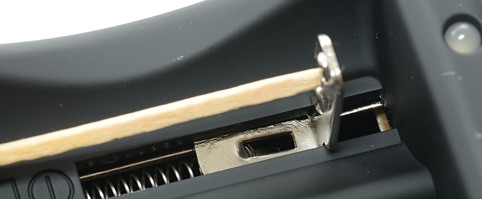
The charge slots can handle from 30mm to 71.6mm long cells, including flat top cells. The slider is acceptable.


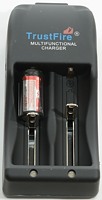
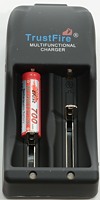
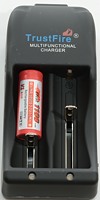
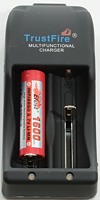
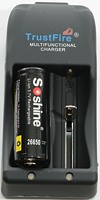
The charge current is too high for normal 16340 and 14500 batteries, but can be used for IMR 16340/14500 batteries.
The charger can handle 70 mm long batteries, inclusive flat top cells.
Measurements
- Below 0.5 volt the charger will not charge and the led is green.
- Between 0.5 volt and 1.5 volt the charger is applying charge current of 1.2A and the led is red. The charger uses pulsing to measure voltage.
- Around 1.5 volt the charger turns charge current off, but the led is still red.
- Above 1.5 volt the charge will slowly increase current again reaching maximum at about 3.2 volt
- The charger will restart charging when the cell drops to 4.00 volt (4.2V mode), but the led will stay green.
- After battery insertion or after a power loss the charger will restart charging.
- When charger is disconnected from power, but with a battery in, it will draw up to 0.6mA from the battery.
- Two batteries will not change the charge current.
- Because each channel is independent, the different voltages vary between the channels with a small amount.
The charger might support NiMH batteries, but it is not announced as doing. I did not investigate it (For a reason see TR-008).
%20%231.png)
This charge curve looks very special. It uses 3 phases.
1) Below 4 volt it charges with 500 to 800mA.
2) Between 4 volt and 4.13 volt is chargers with about 250mA
3) After reporting battery full at about 4.13 volt, it continues to charge with about 70mA until the battery is full.
Note: The charge description on the box is different.
This charging algorithm is fine for the battery, but not for the user, because it is difficult to know when the battery is full.
%20%232.png)
Second slot does exactly the same.
%20%231.png)
A 3400mAh cell is slightly slower.
%20%231.png)
With the 2600 mAh cell the termination point is a bit unstable.
%20%231.png)
A 18350 cell works the same.
%20%231.png)
I had expected some instability around termination with my old 16340 cell, but it works surprising well.
.png)
But with two 3100mAh cells the termination is unstable.
.png)
Using the 12 volt input works just as well, and the charger is slightly cooler.
Due to the pulsing current, the actual charge current is hidden behing the DC input current in the chart.

M1: 51,7°C, M2: 38,9°C, M3: 41,1°C, HS1: 64,1°C
The charger gets hot, but the batteries is acceptable.
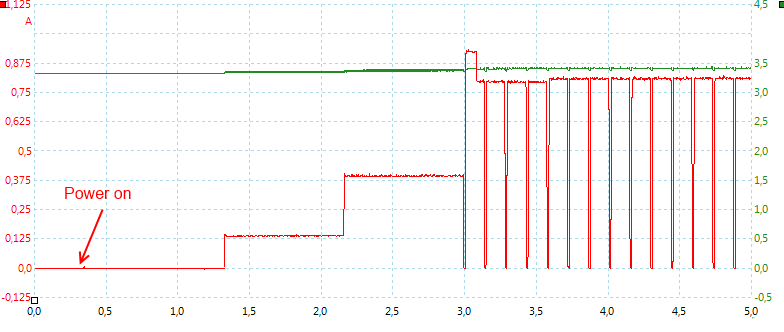
When power is turned on the charger need a few seconds to startup and initialize charging.
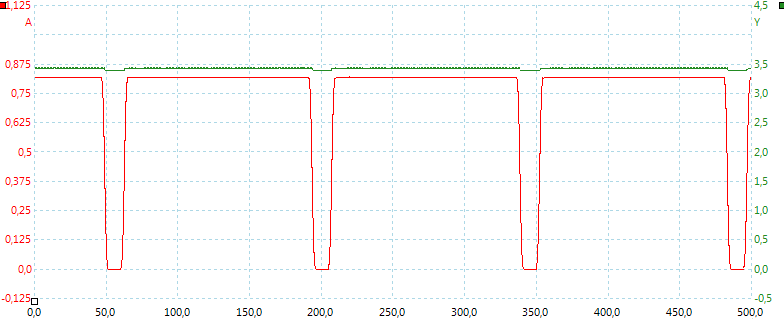
The charger is pulsing while charging, this allows it to measure the voltage with current turned off (It is not the correct way to charge LiIon batteries).
LiFePO4 (IFR) charging
Switching to 3.0V charging, the charger can be used for 3.2 volt LiFePO4 cells.
%20%231.png)
The actual charging works fine and terminates at the correct voltage, but the restart is placed at to high voltage, making the charger cycle on/off, instead of terminating.
This is not acceptable.
The charger passed a isolation test with 2500 volt, but failed a 5000 volt test, this makes the charger acceptable for 110VAC usage, but doubtful for 230VAC usage. Usage with 12 volt (in a car) is, of course, always possible and safe.
Conclusion
I am not very impressed with this type of charge curve, it is slow and the first termination current is way to high and also at a low voltage. The second termination some time later is much better. The charger does not do anything bad to the batteries, but it is slow and if you uses the charge finished indication (i.e. green led), the battery is not full yet.
The on/off cycling when charging LiFePO4 is not very good.
The charger can be used for ICR/LiCoO batteries and if the batteries are removed when the charger report finished, it might even extend the lifetime of the batteries, due to the low charge voltage.
Notes
Here is an explanation on how I did the above charge curves: How do I test a charger



















%20%231.png)
%20%232.png)
%20%231.png)
%20%231.png)
%20%231.png)
%20%231.png)
.png)
.png)



%20%231.png)